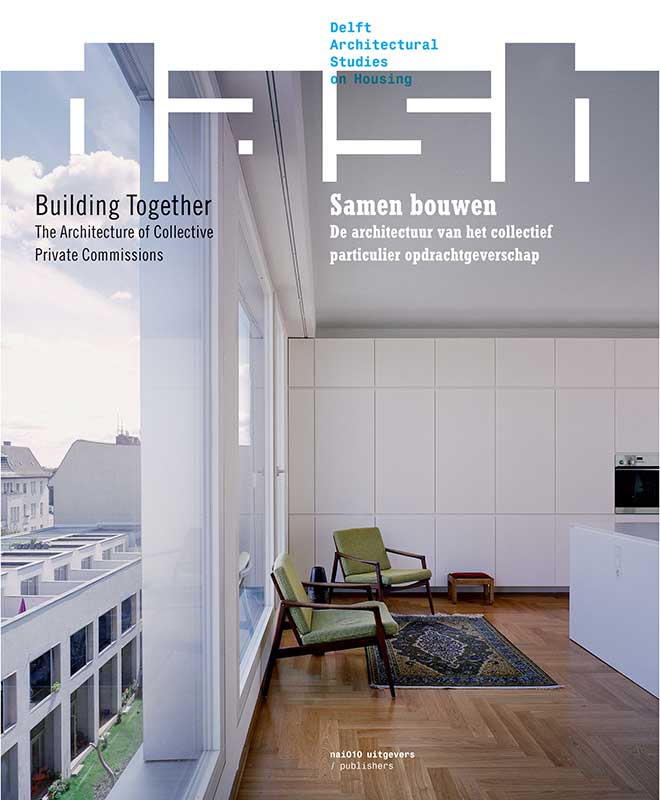Samen bouwen De architectuur van het collectief particulier opdrachtgeverschap
Samenvatting
In het onderzoek Wonen in ruimte en tijd. Een zoektocht naar sociaal-culturele trends in het wonen (2009) signaleert de VROM-raad onder andere een toenemende behoefte om te wonen met gelijkgestemden, al dan niet in een privaat beheerd woondomein. Volgens de VROM-raad zal deze vraag naar kleinere (micro-) milieus, waar wonen, werken, zorg en recreëren zijn gemengd, de komende tijd stijgen. Nu de woningbouw in Nederland als gevolg van de economische crisis stagneert, proberen sommige gemeenten de bouw een impuls te geven door toekomstige bewoners te stimuleren zelf (als groep) woningen te ontwikkelen en te (laten) ontwerpen. Deze werkwijze (‘ collectief particulier opdrachtgeverschap’ of ‘CPO’) omzeilt de traditionele ontwikkelaar, die in de huidige tijd de risico’s van nieuwbouw niet meer kan of wil dragen. Zo kan een meer vraaggestuurde, op specifieke wensen toegespitste woningbouw ontstaan.
Voorstanders van CPO halen vaak schaalvergroting en de daarmee verbonden kostenbeperking als argument aan om voor deze ontwikkelstrategie te kiezen. Er zijn echter naast economische nog andere motieven om met een groep een woongebouw te ontwikkelen. De kans om woning en woonomgeving geheel naar eigen wens en inzicht vorm te geven, is daarvan de belangrijkste. Zoals de voorbeelden laten zien, lenen CPO-projecten zich bij uitstek voor bijzondere woonprogramma’s evenals voor experimenten met woningplattegronden en schakelingen. Om ook de ontwerpende discipline aan bod te laten komen in het hedendaagse debat over CPO, werpt deze DASH zich op de vraag wat CPO kan betekenen voor het woningontwerp. Welke mogelijkheden biedt collectief particulier opdrachtgeverschap voor het realiseren van bijzondere programma’s, woningtypen en architectonische expressie?
Dick van Gameren behandelt in zijn artikel verschillende historische en moderne Nederlandse projecten die via CPO tot stand zijn gekomen en onderzoekt de historische en mogelijk toekomstige rol van kleinschalig collectief particulier opdrachtgeverschap voor de bouw- en ontwikkelpraktijk in Nederland.
In een artikel over Baugruppen licht Vincent Kompier toe hoe een sterke CPO-traditie in Duitsland tot interessante en vernieuwende woningarchitectuur heeft geleid.
Pierijn van der Putt laat zien dat door de directe samenwerking tussen de toekomstige bewoners van de Eindhovense wijk ’t Hool (1972) en het bureau Van den Broek en Bakema, zowel op de schaal van de buurt als het individuele woonhuis, een uniek ontwerp is ontstaan dat de woonwensen van een nieuwe middenklasse vertolkt.
In de beide interviews komen aan het woord architect en CPO-voorvechter Hein de Haan, en Frank van Beek en Frank Veen van projectontwikkelaar Lingotto.



